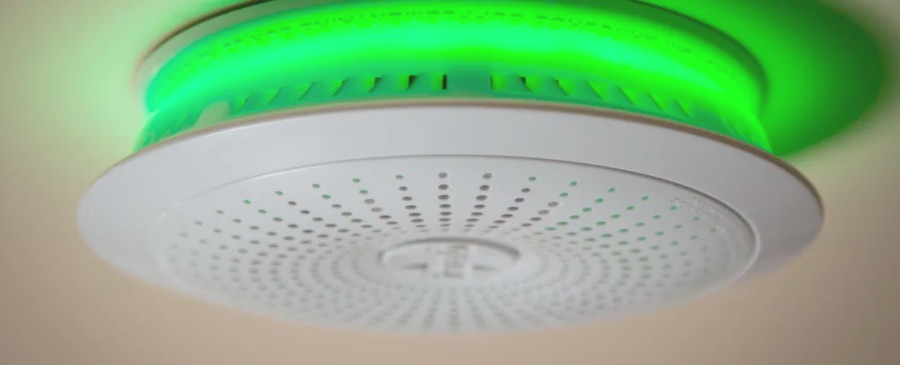Smoke & Carbon Monoxide Detectors
Smoke Detectors Save Lives
Smoke alarms and carbon monoxide (CO) detectors warn you of danger in your home, so that you can get out as soon as possible. Studies show that more than 60 percent of deadly U.S. fires occur in homes that do not have smoke alarms installed or have alarms that do not function properly (because of missing batteries, dead batteries, or connection issues). According to the National Fire Protection Association (NFPA), 40 percent of U.S. residential fire deaths result from fires in homes with no smoke alarms, while 23 percent occurred in homes without working smoke alarms.
A smart smoke alarm or CO detector will alert you to danger from smoke, fire, or a malfunctioning appliance even when you’re not home. Because of this, they can not only save your life, they can also protect your home -most likely your single biggest financial investment.
Smoke Detectors: Placement & Interconnection
Smoke alarms should be installed in every bedroom, outside each separate sleeping area and on every level of the home, including the basement. The NFPA also recommends that families interconnect all smoke alarms throughout the home so that if one alarm sounds, they all sound.
If you want to integrate your smoke alarm with the rest of your home, consider a smart smoke detector that is supported by a major smart home hub. This will allow notifications and alerts via your smart phone.
Are High Carbon Monoxide Levels Dangerous?
Carbon monoxide is a colorless, odorless and tasteless gas that is in many ways more dangerous than fire, mainly because it can’t be detected by any of your senses – only with a carbon monoxide detector. If you have a gas furnace or heating system, it is highly recommended that at least one carbon monoxide detector is installed in your home. If you want even more protection, install one near every sleeping area and one above the garage (carbon monoxide can leak out of your car’s exhaust). For best results, make sure your carbon monoxide detectors are at least 15 feet away from any fuel burning appliances – this will reduce the risk of false alarms.










